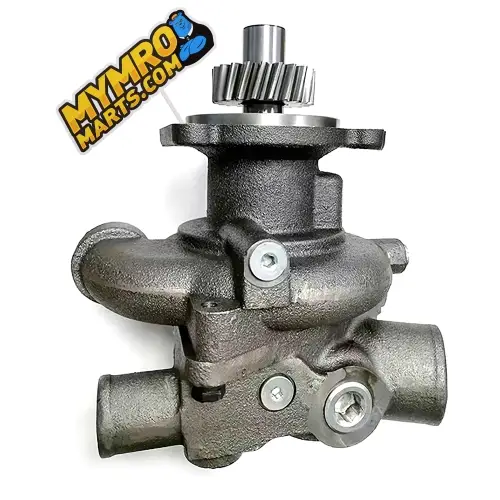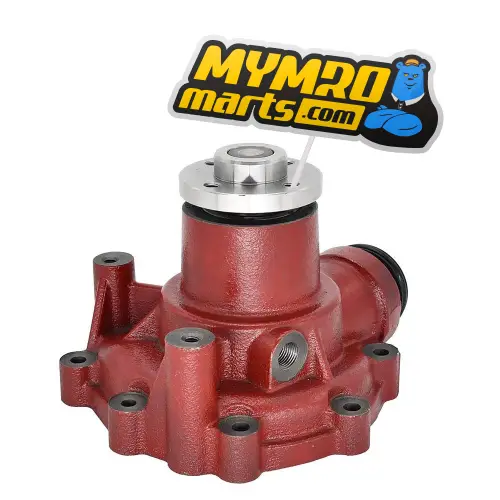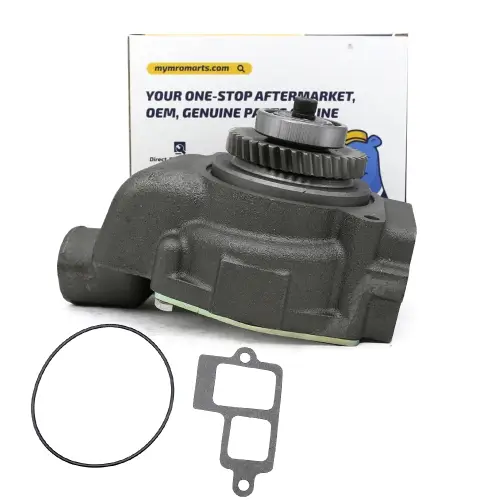How To Replace Timing Belt And Water Pump?
The engine is an integral part of heavy equipment. The timing belt and water pump are key components of the engine. They ensure that the engine can run smoothly; they are akin to the engine's heart. MyMROmarts will explain what a timing belt and water pump are in this post and how replacing a timing belt and water pump, assists readers in comprehending their significance and the proper technique for doing so.
What Is A Timing Belt And Water Pump?
The timing belt is one of the key components in the mechanical engine. Its role is to ensure that the various engine components work together at the correct time to achieve optimal performance. Timing belts are made of rubber or a rubber compound that is wear-resistant and high-strength and can withstand high temperatures and pressures. The timing belt transmits power by connecting the engine's crankshaft and camshaft to ensure that the movement of the valves and pistons is synchronized with the rotation of the crankshaft.
In addition to the timing belt, the water pump is also a key component in the engine of mechanical equipment. The main function of the water pump is to cool the engine and prevent overheating. The water pump pulls coolant from the radiator through the engine, removing heat and eventually returning the coolant to the radiator. This process circulates continuously to maintain the engine temperature within a suitable range. If the water pump fails, the engine may be damaged by overheating, affecting the engine and other diesel engine parts.
How To Replace Timing Belt?
1. First, let the engine of the mechanical equipment cool down to prevent burns during operation. Then, disconnect the negative cable from the battery to prevent electric shock.
2. Remove the external accessories covering the timing belt, usually the fan, fan case, crankshaft pulley, etc. need to be removed.
3. Use specific tools to release the timing belt tensioner to facilitate the removal of the belt from the crankshaft and camshaft.
4. Carefully remove the old timing belt, check the wear degree of the old timing belt, and choose a suitable timing belt to replace it.
5. Install the new timing belt on the crankshaft and camshaft properly, following the professional master's directions, and set the tensioning device so that the new belt is at the proper tension level.
6. To check that the water pump is operating properly, start the engine with the starter motor after you've installed the new belt. Then, let it run for a bit.
How To Replace Water Pump?
1. Like the timing belt, first make sure the engine is in a cool state and disconnect the negative cable of the battery.
2. Carefully remove the external accessories covering the engine water pump. You may need to remove the fan, fan case, etc.
3. After removing the coolant inlet and outlet pipes connected to the engine, remove the old water pump.
4. Install the new water pump in the same position. It is recommended to use a new sealing gasket and tighten the bolts.
5. Reinstall the external accessories of the water pump, fill it with an appropriate amount of coolant, and ensure that the cooling system operates normally. Start the engine, let it run for a while, and then check the water pump for coolant leaks.
In conclusion, understanding the importance of replacing timing belts and water pumps in heavy equipment is crucial for keeping the engine's optimal performance. Regular maintenance and proper water pump and timing belt replacement, as explained in this post, can ensure the heart of the engine continues to beat smoothly, preventing overheating and potential damage. Keep your heavy equipment in top shape for long-lasting efficiency and reliability.
 Track Your Order
Track Your Order








